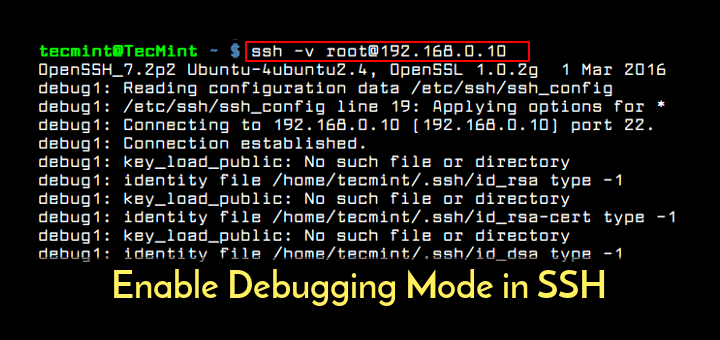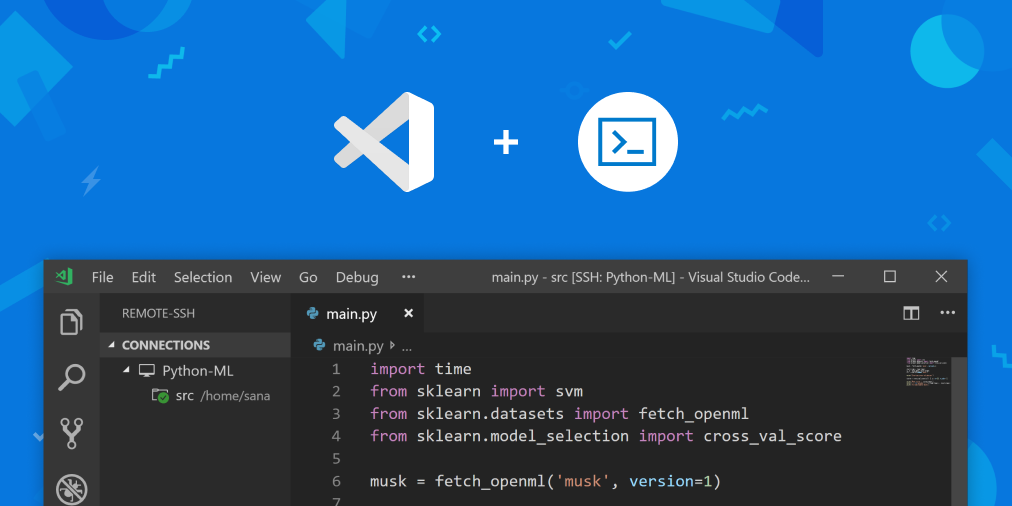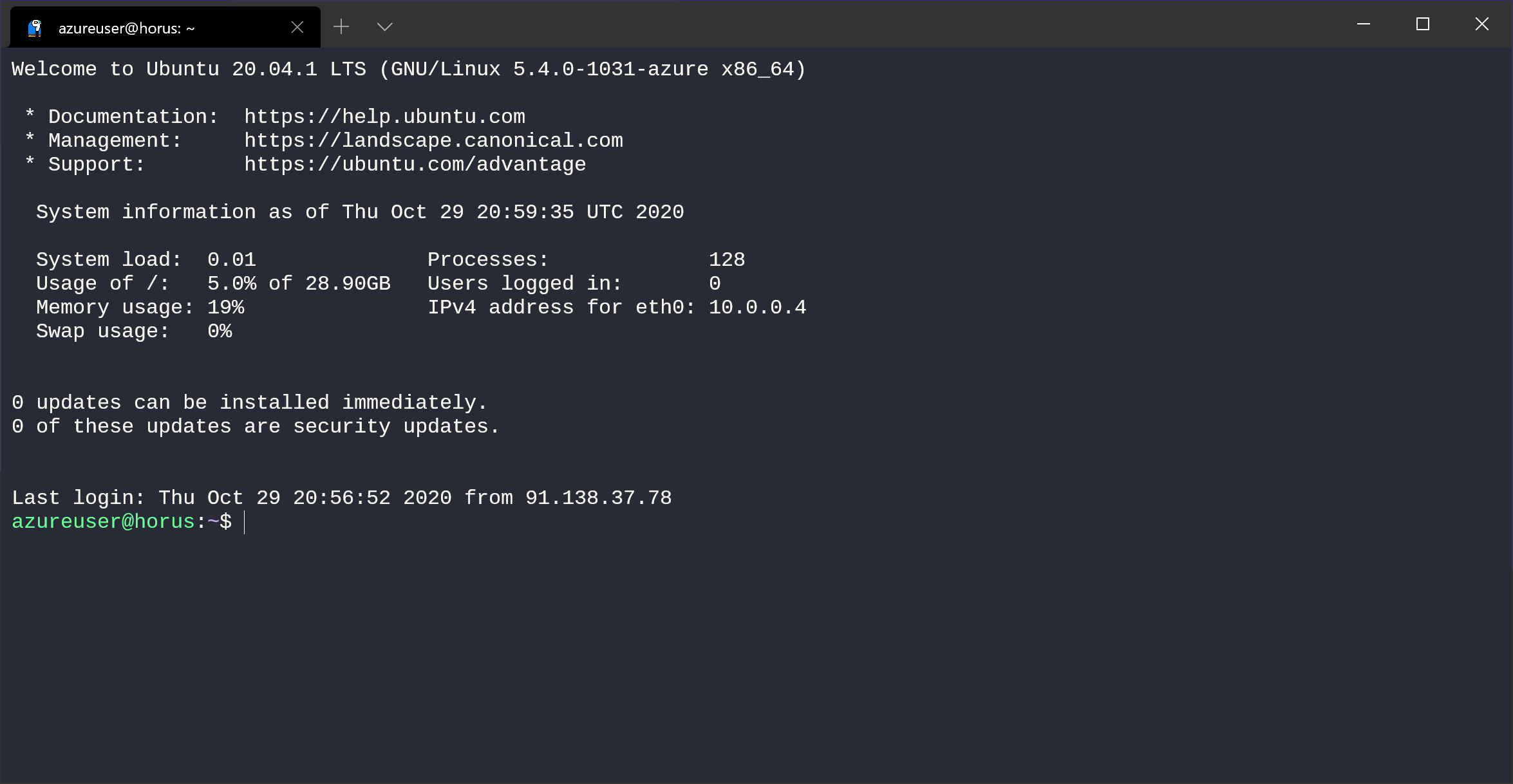October 3, 2019 by Sana Ajani, @sana_ajani
- Ssh Config Host
- Ssh Config Key
- Openssh Key Generation
- Ssh Config Key Exchange Algorithm
- Ssh Config Key In Windows 10

Oct 30, 2020 From the system-wide client configuration file (/etc/ssh/sshconfig) The SSH client configuration file is a text file containing keywords and arguments. To specify which private key should be used for connections to a particular remote host, use a text editor to create a /.ssh/config that includes the Host and IdentityFile keywords. SSH clients will typically use /.ssh/identity (ssh v1) or one of /.ssh/idrsa or /.ssh/iddsa (v2) as the default private key. You can change this in /.ssh/config (the IdentityFile parameter - the -i option to SSH actually overrides this. See man sshconfig for details). Kasumbi no rang pdf.
In a previous Remote SSH blog post, we went over how to set up a Linux virtual machine and connect to the VM using the Remote - SSH extension in Visual Studio Code. In this blog post, we'll go into some tips and tricks that you can use to get the most out of your remote setup.
Connect using Remote SSH
The Visual Studio Code Remote - SSH extension allows you to connect to a remote machine or VM using SSH, all from inside VS Code. If you don't already have the extension installed, you can search for 'remote ssh' in the Extensions view (⇧⌘X (Windows, Linux Ctrl+Shift+X)).

After you install the extension, you'll notice an indicator on the bottom-left corner of the Status bar. This indicator tells you in which context VS Code is running (local or remote). Click on the indicator to bring up a list of Remote extension commands.

SSH configuration file
In the earlier Remote SSH blog post, we only connected to a single machine and did so by entering the 'user@host' when prompted. If you log in to multiple remote servers or local virtual machines on a regular basis, there's a better way to connect without having to remember all the usernames, addresses, and additional configuration options.
OpenSSH supports using a configuration file to store all your different SSH connections. To use an SSH config file, click on the remote indicator to bring up the remote commands, choose Open Configuration File, and select the file that follows the path 'Users/{yourusername}/.ssh/config'.
Here's an example of an SSH config file:
There are many more configuration options you can specify in the SSH config file format. You'll get completions and colorizations in this file and you can press (⌃Space (Windows, Linux Ctrl+Space)) for IntelliSense to learn more about the config options.
The options used above are:
| Option | Description |
|---|---|
| Host | An easy-to-remember alias for your host machine. |
| HostName | The hostname of server (you can use the IP address of the server). |
| User | The user you've specified to log in to the machine via SSH. |
| Port | The port used to connect via SSH. The default port is 22, but if you've specified a unique port, you can configure it here. |
| IdentityFile | The file location where you've stored your private key. |
You can add the information for all the hosts you have. Once you've saved the config file, you'll be able to see those hosts in the Remote Explorer, as well as any folders you have opened on that host. You can select the icon next to each host or folder and it will launch a new VS Code window (instance) and connect you to that host. In the screenshot below, I'm connected to my remote machine 'python-linux-vm' and the Remote Explorer shows me the folders I have connected to in the past, as well as any forwarded ports from the remote machine.
ProxyCommand
Sometimes you may need to connect from your desktop or laptop to a remote machine over your company's Intranet or behind a firewall. In this case, you may be using an intermediate server or jump box. This kind of setup is useful if you are working within a secure system that is configured to only accept SSH connections from a fixed set of hosts.
To use a jump-box setup with the Remote - SSH extension, you can use the ProxyCommand config option. This configuration will open a background SSH connection to the jump box, and then connect via a private IP address to the target. Actress deepa photos.
You can set the ProxyCommand config option in the SSH config file like this:
ControlMaster

If you are connecting to a remote SSH host using other authentication methods besides key-based authentication, such as two-factor, password-based, or an SSH key with a passphrase, you may have to enter the required information multiple times.
Instead of opening multiple SSH connections, you can use ControlMaster option (only on macOS/Linux clients) to reuse an existing connection and reduce the number of times you must enter your passphrase.
To use this feature, add the following to your SSH config file:
Offline remote machine
If you are restricted by a firewall or your company locks down your VMs and they cannot connect to the Internet, the Remote - SSH extension won't be able to connect to your VM because VS Code needs to download a component called the VS Code Server to the remote machine.
Ssh Config Host
However, you can now solve this issue by a new user setting in the Remote - SSH extension. If you enable the setting remote.SSH.allowLocalServerDownload, the extension will install the VS Code Server on the client first and then copy it over to the server via SCP.
Note: This is currently an experimental feature but will be turned on by default in the next release.
Remote - SSH Nightly extension
If you're interested in testing new updates and experimental features as soon as they are available, install the Remote - SSH Nightly extension (uninstall the Remote-SSH stable extension first). This is the nightly build of the extension where we experiment with new features and settings before releasing them into the stable version.
Ssh Config Key
We'd like your feedback
Thanks for trying out the Remote - SSH extension! If you run into any issues or would like to suggest new features or scenarios for us, please open an issue on our GitHub repo. If you want to see what features we're currently working on or are upcoming, take a look at our Remote Development release notes and iteration plans. You can also try out the introductory Remote development over SSH tutorial, which walk you through using the other remote extensions to work inside Docker containers and the Window Subsystem for Linux (WSL).
Happy Remote Coding,

Openssh Key Generation
Sana Ajani, VS Code Program Manager @sana_ajani
By default, the SSH client verifies the identity of the host to which it connects.
If the remote host key is unknown to your SSH client, you would be asked to accept it by typing “yes” or “no”.
This could cause a trouble when running from script that automatically connects to a remote host over SSH protocol.
Cool Tip: Slow SSH login? Password prompt takes too long? You can easily remove the delay! Read more →
This article explains how to bypass this verification step by disabling host key checking.
The Authenticity Of Host Can’t Be Established
When you log into a remote host that you have never connected before, the remote host key is most likely unknown to your SSH client, and you would be asked to confirm its fingerprint:
If your answer is ‘yes’, the SSH client continues login, and stores the host key locally in the file~/.ssh/known_hosts.If your answer is ‘no’, the connection will be terminated.
If you would like to bypass this verification step, you can set the “StrictHostKeyChecking” option to “no” on the command line:
This option disables the prompt and automatically adds the host key to the ~/.ssh/known_hosts file.
Ssh Config Key Exchange Algorithm
Remote Host Identification Has Changed
However, even with “StrictHostKeyChecking=no“, you may be refused to connect with the following warning message:
Ssh Config Key In Windows 10
If you are sure that it is harmless and the remote host key has been changed in a legitimate way, you can skip the host key checking by sending the key to a null known_hosts file:
You can also set these options permanently in ~/.ssh/config (for the current user) or in /etc/ssh/ssh_config (for all users).
Cool Tip: Log in to a remote Linux server without entering password! Set up password-less SSH login! Read more →
Also the option can be set either for the all hosts or for a given set of IP addresses.
Disable SSH host key checking for all hosts
Disable SSH host key checking For 192.168.0.0/24
